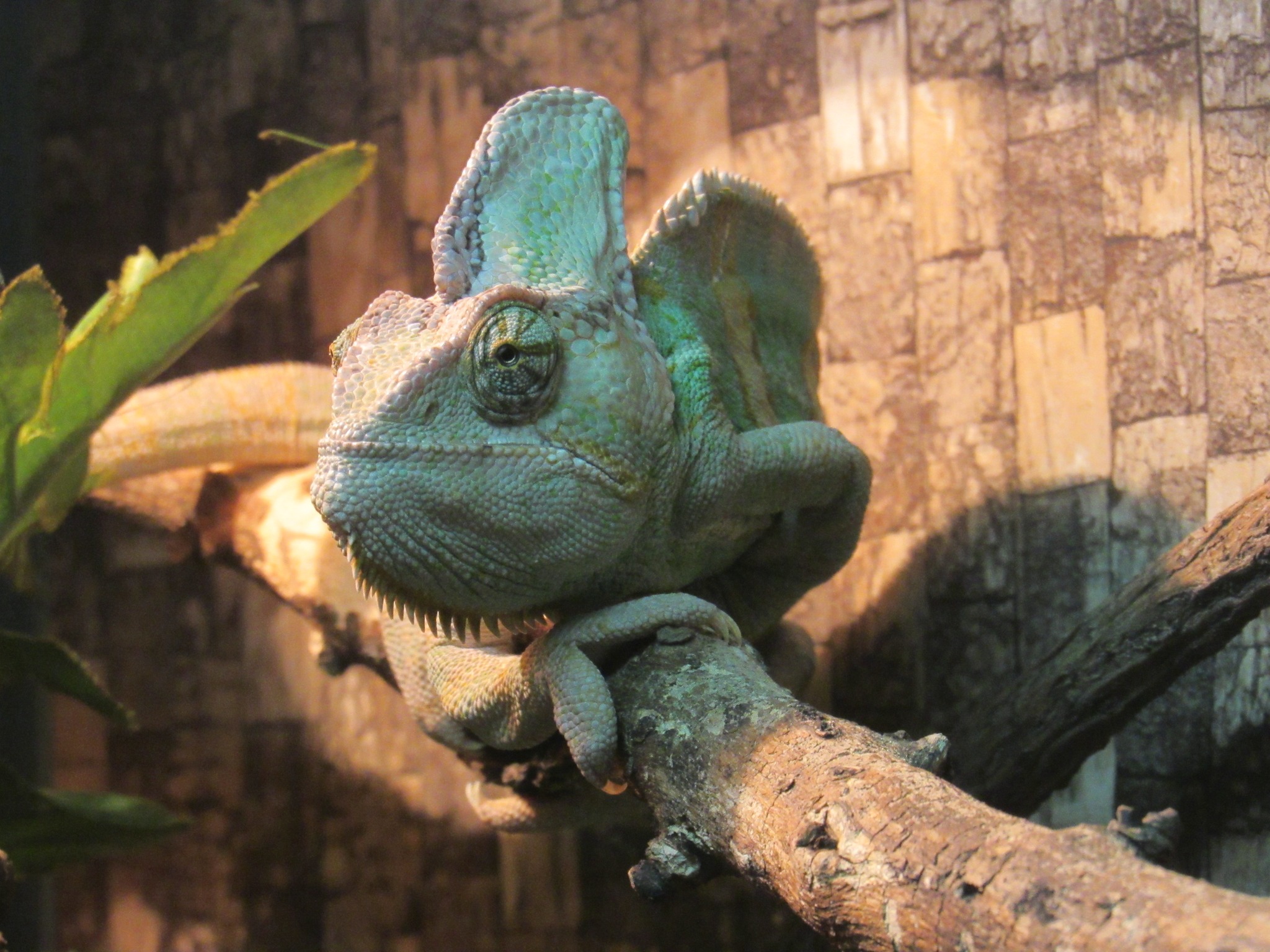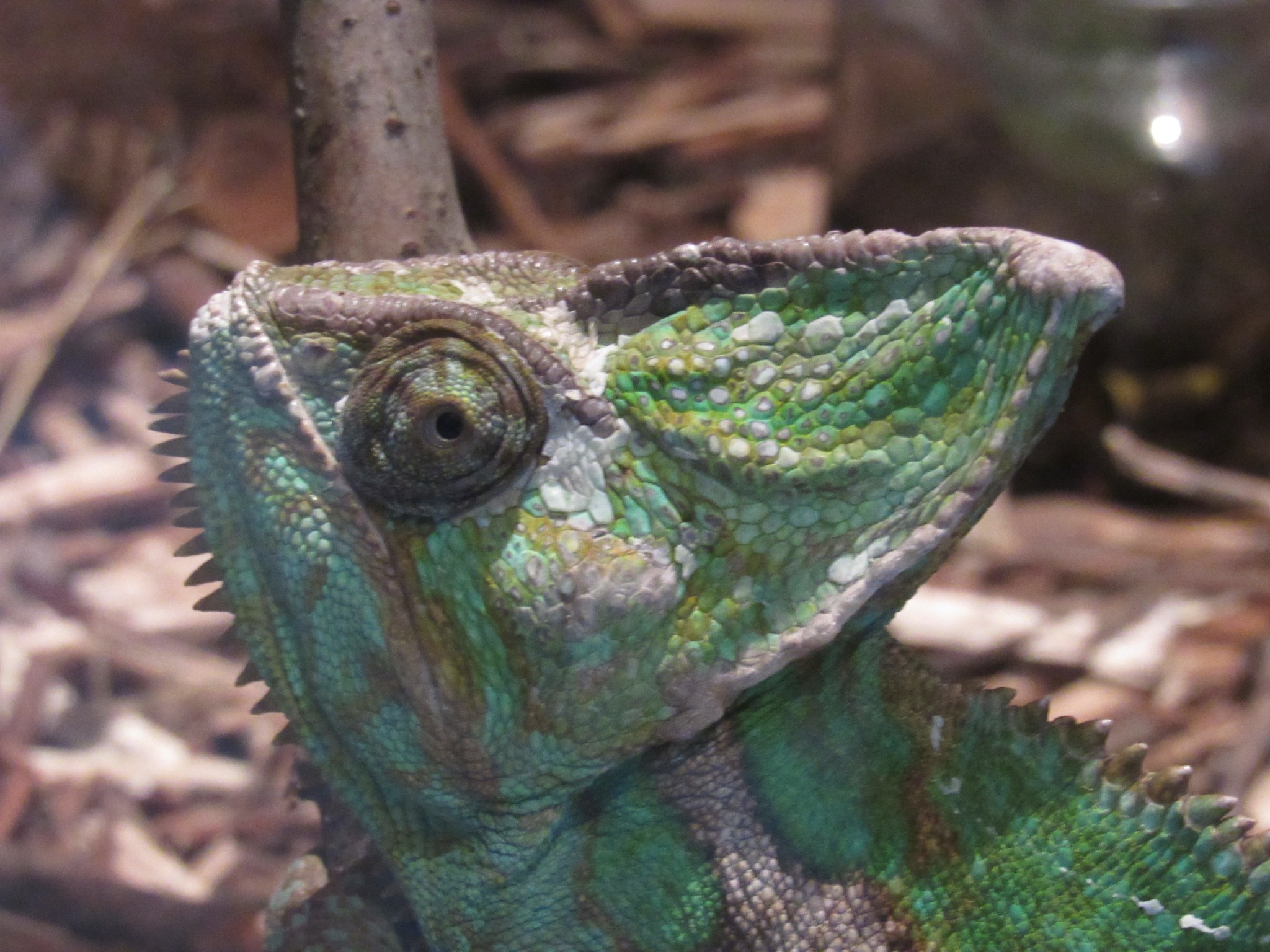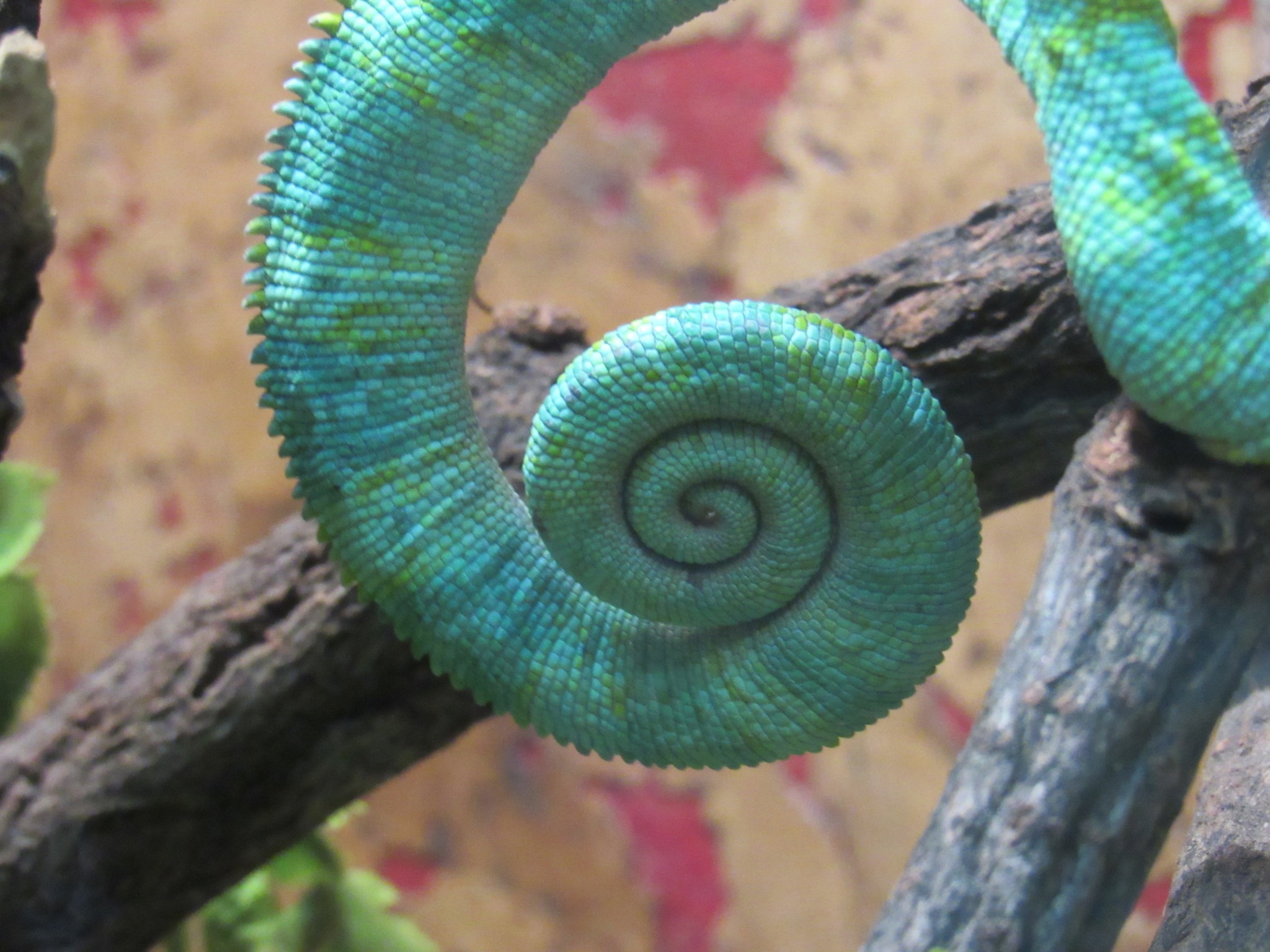Animals that are the symbols of the New Year 2024
"Dragons of Mykolaiv Zoo" – that's what we called a series of educational articles about the animals of our zoo dedicated to the symbol of the New Year 2024. You can see all of them by visiting Mykolaiv Zoo.
Today's publication is dedicated to one of the most interesting and famous "dragons" – chameleons.
Chameleons are a family of lizards that are perfectly adapted to life in trees. Known to all, both adults and very young nature lovers, thanks to the original and very interesting features of their structure.
The eyes of these reptiles are large, round with thick fused, ring-shaped eyelids, which are completely covered with scales, and a small hole for the pupil. Chameleons are characterized by eye movements that are independent of each other. This adaptation helps the animal to better see its prey – various insects that it hunts from an ambush. Noticing an insect with one eye, the chameleon slowly turns its head and shifts the other eye to it to better assess the distance, and then catches the prey with a very long (equal to the length of the head and body combined), flexible, elastic tongue.
The chameleon's toes are arranged in opposing groups of 2-3, so that the foot and hand are transformed into a kind of claws with which the animal grasps tree branches while moving. Sharp claws and a sticky, spirally twisted tail also help the reptile to hold on to the branch better.
The color of a chameleon can change quickly. This is due to the structure of the skin. Its outer covering is fibrous, in which there are chromatophores – branched cells with dark brown, reddish or yellowish pigments. In case of shortening of chromatophore processes, the pigmentation accumulates in the center of the cells and the skin looks whitish or yellow. When the dark pigment accumulates in the fibrous covering of the skin, it becomes dark, almost black. Shades are formed by a combination of pigments. Green tones occur when the sun's rays are refracted in the upper layer of the skin, where there are many guanine crystals. As a result, the color can change rapidly from white and orange through yellow and green to purple, dark brown and black. The color change occurs under the influence of temperature, light, moisture, thirst, hunger, fright, irritation.
In Mykolaiv Zoo you can see a very spectacular and bright veiled chameleon, which lives in the Southwest of the Arabian Peninsula. Terrariums with chameleons are located in the warm exhibit room of the primate department.




